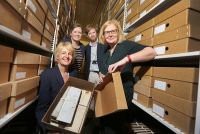

The event, which is to be held at Hexham Mart, Tyne Green, has been arranged jointly by Fire and Rescue, Police and Northumberland Community Safety and follows a similar event in Alnwick earlier this month.
The event is to start at 6pm and runs through until 9pm several emergency services will be in attendance and will provide information and live demonstrations to drivers to highlight key issues and concerns on our roads. It's aimed at young people aged 14-24 but all are welcome to join.
The evening begins with an opportunity to view modified cars, speak to medics, Fire and Rescue, paramedics, driving instructors, as well as Northumberland Blood Bike volunteers.
You'll also hear from Northumbria's specialist Op Dragoon police, a dedicated team targeting road safety. ROSPA advanced motoring instructors will be on hand to give you a free driving assessment in your own car and a local mechanic will be available to carry out free vehicle checks.
Northumbria Police Inspector, Pam Bridges said, “This is a great chance for young people who are already driving or thinking about learning to drive to really understand road safety. You'll see what's involved in a live extraction from a vehicle that's been in a mock accident and get hands-on with other live demonstrations, including a simulated drive with 'beer goggles' to see how dangerous drink driving can really be. For just a few hours of your time, you could learn something that could one day make a big difference or even save your life."
Councillor John Riddle, Cabinet Member for Planning, Housing, Public Protection and Fire, said: 'The Young Driver Safety events have a great benefit to drivers and the local community. The events provide a range of information and demonstrations regarding safe driving and provide the attendees with information that they can take away and put into use when on our roads, giving them further education into safe driving with benefits for everyone."
The event also provides the opportunity for drivers to have free assessed drives in their own car by ROSPA advanced motoring instructors along with free vehicle examinations carried out by a local mechanic.
- Read more...
- 0 comments
- 1,524 views










